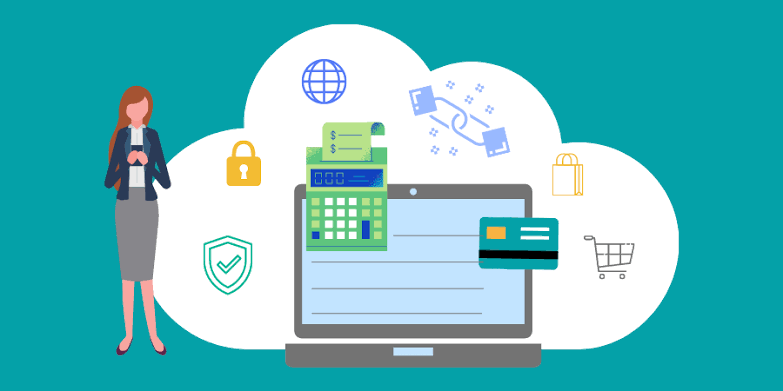In the digital age, online transactions have become the backbone of commerce, finance, and global communication. From e-commerce payments to cryptocurrency transfers, security and transparency are vital to building trust between parties. Blockchain technology has emerged as one of the most powerful tools for ensuring safe online transactions. By decentralizing data, using cryptographic security, and creating tamper-proof records, blockchain reduces the risks of fraud, hacking, and unauthorized changes. In 2025, it is at the core of securing financial operations, digital identities, and smart contracts worldwide.
Understanding Blockchain Technology
Blockchain is a decentralized digital ledger that records transactions across multiple computers, known as nodes, in a network. Unlike traditional centralized systems, where a single server or authority stores transaction data, blockchain distributes this data across multiple participants, making it highly secure and resistant to tampering.
Key characteristics of blockchain include:
- Decentralization: No single entity has full control over the data, reducing vulnerability to attacks.
- Immutability: Once a transaction is recorded, it cannot be altered or deleted.
- Transparency: All participants can view the transaction history, ensuring accountability.
- Security through Cryptography: Advanced encryption protects data and prevents unauthorized access.
These foundational features make blockchain an ideal solution for securing online transactions.
Cryptographic Security for Transactions
At the heart of blockchain’s security lies cryptography. Each transaction on the blockchain is encrypted and assigned a unique digital signature using cryptographic algorithms.
The cryptographic process works through:
- Public and Private Keys: Users generate a pair of keys. The public key is visible to the network, while the private key is kept secret and used to authorize transactions.
- Digital Signatures: Every transaction is signed with the user’s private key, ensuring that only authorized parties can initiate actions.
- Hashing: Transactions are grouped into blocks, and each block is secured with a cryptographic hash that links it to the previous block, forming a chain.
This combination ensures that transactions are authentic, verifiable, and nearly impossible to forge.
Decentralization and Distributed Ledgers
Traditional online transactions rely on centralized servers that can be vulnerable to hacks, fraud, or system failures. Blockchain eliminates this risk through its distributed ledger system, where all nodes in the network store identical copies of transaction records.
Benefits of decentralization include:
- Enhanced Security: A hacker would need to compromise the majority of nodes simultaneously, which is extremely difficult.
- Fault Tolerance: Even if one node fails, the network remains functional and secure.
- Trustless Transactions: Parties do not need to trust a single authority; the network itself validates all transactions.
This design makes blockchain inherently more secure for handling sensitive digital exchanges.
Transparency and Traceability
Blockchain technology ensures that all recorded transactions are visible to participants, creating an environment of transparency and traceability. While sensitive details can remain private through encryption, the transaction itself is permanently logged and time-stamped.
Advantages of transparency include:
- Fraud Prevention: Suspicious activities can be detected quickly.
- Auditability: Businesses can verify transactions in real time without external audits.
- Enhanced Consumer Confidence: Users trust platforms that provide clear transaction histories.
By combining privacy with verifiable transparency, blockchain provides the perfect balance for secure online transactions.
Immutability and Tamper-Proof Records
A key feature of blockchain is immutability, which ensures that once a transaction is confirmed, it cannot be altered retroactively. This property is achieved through cryptographic hashing and the linking of blocks in a chain.
How immutability secures transactions:
- Altering any past transaction would require rewriting the entire chain across all nodes, which is practically impossible.
- Tamper-proof records eliminate disputes since the ledger serves as the ultimate source of truth.
- Financial, legal, and supply chain industries benefit from this permanence and security.
Immutability ensures that blockchain-based transactions are protected from unauthorized changes or fraud.
Smart Contracts and Automated Security
Blockchain technology goes beyond basic transactions by introducing smart contracts—self-executing digital agreements that trigger actions when specific conditions are met. These contracts are stored on the blockchain, making them secure and tamper-resistant.
Benefits of smart contracts for transaction safety:
- Automation: Reduces human error and minimizes the chance of manipulation.
- Elimination of Intermediaries: Direct peer-to-peer execution reduces risks from third-party involvement.
- Guaranteed Execution: The contract enforces itself once conditions are met, ensuring fairness.
Smart contracts are widely used in decentralized finance (DeFi), insurance, and e-commerce to secure complex transactions safely.
Real-World Applications of Secure Blockchain Transactions
Blockchain security is now transforming multiple industries:
- Financial Services: Banks and fintech platforms use blockchain to secure cross-border payments and prevent fraud.
- E-Commerce: Online marketplaces integrate blockchain to ensure payment authenticity and reduce chargeback risks.
- Supply Chain: Blockchain tracks products from source to consumer, ensuring traceable and verified exchanges.
- Healthcare and Identity Management: Blockchain protects sensitive patient and identity data during digital transactions.
These real-world applications highlight how blockchain has become a trusted backbone for online security.
Conclusion
Blockchain technology has revolutionized how online transactions are secured by combining decentralization, cryptography, transparency, and immutability. Its distributed nature eliminates single points of failure, while tamper-proof records and smart contracts provide unparalleled safety and reliability. In 2025, blockchain continues to enhance trust in digital ecosystems, protecting everything from financial transactions to personal data. For businesses and individuals alike, adopting blockchain for online transactions is a powerful step toward safer and more transparent digital interactions.




Interesting